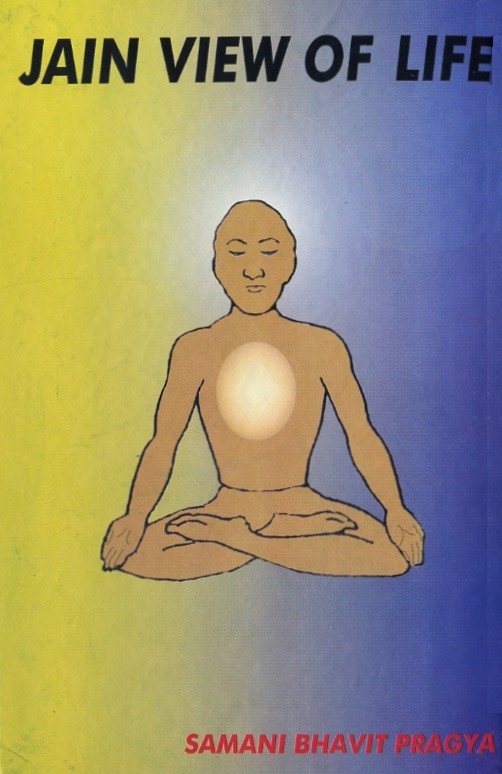Non-Violence
Non-violence (Ahimsa) is the cardinal principle of Jainism, representing the cornerstone of that system. It regards the sanctity and equality of all life irrespective of size, shape, or form. All living beings are equal, from the largest to the lowliest of the lowly. Ahimsa means not to kill, hurt, harm, oppress, or enslave any living being by means of mind, speech, or action. Avoiding the killing of any living being is physical Ahimsa, refraining from harsh language, slanderous talk, babbling, backbiting, or lying, is vocal Ahimsa, and abstaining from evil thoughts or the absence of anger, deceit, conceit, etc., is mental Ahimsa. Violence (Himsa) is not only the infliction of physical injury, but also the occurrence of violent words or thoughts.
Non-violent Life
Various aspects of Himsa and Ahimsa have been discussed in Jain texts. The ascetic observes complete nonviolence. A monk does not cause injury or pain to another in thought, word, or deed. Whenever a monk moves, he watches his steps, fixing his eyes on the path. They go from house to house to take alms. They never take special food that is prepared for them. According to the Jain view, whether we do something or get it done or encourage someone else to do it, it is all the same. In technical terms, karana (doing), karavana (getting done), and anumodan (supporting) all lead to the same outcome.
Lay Follower's Life
Lay followers are granted many exemptions because they have to perform the daily duties of life such as cooking, washing, travelling, etc. The various operations of agriculture and industry require the destruction of life, and life may have to be injured or even destroyed in war and defending one's own life. Lay people who observe small vows think before doing violent acts on any life form; is it necessary for me to injure this being, and, if so, what is the minimum amount of injury that will serve the need? In this way, they practise Ahimsa partially. In other words, laymen and lay women follow Anuvrata (small vows).
Subjective and Objective Violence
Ahimsa is an essential, intrinsic, and inherent nature of the soul. When a person commits violence, their soul is corrupted and becomes passional, causing harm to their nature. Illustrating this point, Lord Mahavira said, "One whom you think should be hit is none else but you, one whom you think should be tortured is none else but you." This means that if someone has the thought of killing or torturing any living being, violence is being committed. To harm another is essentially to harm oneself. Evil thoughts or ideas corrupt oneself and cause the soul to attract karmic bondage, and this is subjective violence. To harm others physically is objective violence.
Types of Violence
There are three types of Himsa in Jain scriptures.
- Arambhaja violence which unavoidably occurs in making a livelihood such as in agriculture or industry.
- Virodhaja violence which occurs in combat to defend one's country.
- Samkalpaja violence which appears to be intentional.
The Powerful Weapon of Violence
Intentional violence is called Bhava in Jain terminology. Real involvement in any action comes from within. If one performs any act with intense attachment or malice, the karmic bondage would strong because of subjective involvement with the act, similarly, if one performs an act with detachment and objectivity, the karmic bondage would indeed be weak. Prasannachandra was the King of Pottanpur. With the passage of time, he entrusted all the responsibilities of state to his son and he became a monk. Once when he had travelled to Rajgriha with Lord Mahavira, he was engrossed in meditation outside the Samavasaran while standing on one leg with arms upraised. King Shrenik was passing by with his army to pay homage to the Lord. Seeing the resplendent face of the monk, a minister of the king named Durmukh taunted the monk, "Having left the whole responsibility on your son, you have become a sage, but do you not know what is happening with your son? He is surrounded by enemies; his life is in peril. None is his saviour."
Hearing this, the monk's mind was diverted. He was inflamed with rage and began a mental battle with his enemies, but outside, he looked calm and peaceful. The king was very much impressed by his illuminated face. He asked the Lord, "Oh Lord"? I saw a monk outside Samavasaran who was engaged in deep meditation. If he leaves his body, what state would he attain?" The Lord replied, "He would have been hurled down to hell." The questions and answers were continued. After a while, the monk's reflections turned and he began to think, "What am I doing? I am a monk. Whose son? Whose enemy? Whose kingdom? I have been initiated in monkhood and have left everything behind forever."
He regretted the breach of his great vows. He kept on purifying his mental reflections and attained omniscience. No sooner had this occurred than the Lord replied to the king, "The sage has acquired omniscience" which surprised the king. This episode reflects how mental reflections can lead a man into a hellish life as well as to omniscience. To be good or to achieve the supreme state, it is essential to purify our mental reflections.
The Root of Peace
Peace or war originates in the minds of men, then it appears on the physical and verbal level. Being a social creature, it is hard to abstain from arambhaja and virodhaja violence, but man must give up intentional violence. This is the first step towards the gradual development of the soul. It is well known to us that we cannot perform an act that harms others without first generating a defilement in our own mind. Similarly, one cannot perform an act that is good for others without first creating good feelings within.
Avoidance of Unnecessary Violence
The second step for the development of non-violence is to make a distinction between necessary (inevitable) and unnecessary (avoidable) violence. In order to remain alive, lay people have to perform certain activities, but they can abstain from avoidable violence such as selling liquor, meat, arms, animals, or snatching and exploiting the position, power, and authority of others. They also should avoid using cosmetics, wearing silk sarees, leather, etc., and the seven addictions, namely, fornication, adultery, prostitution, wanton killing for sport, stealing, robbing, and gambling.
Living Examples of Restraint
Anand Shravak was a multi-millionaire. He had four million gold coins for household activities, an equal amount in cash, and had invested the same amount in trade. He was the owner of large land holdings and 40,000 cattle. Despite this, his life was a living example of restraint. He did not eat any other fruit except gooseberries, had a few clothes to wear, and his entire property was devoted to the use of his family, society, and the nation.
Conscience to Practice
In Gujarat, the Commander-in-Chief was a Jain. The king went away for some purpose, and the enemy, seeing an opportunity, attacked the kingdom. When the queen heard this news, she said, "I myself shall to go the battlefield." The commander said, "Please give us your orders." The queen gave him permission to go into battle, when the sun had set so the battle could not be fought. In the morning, the battle was about to begin, it was the time of evening. He started Pratikraman (repentance for past activities). The commander was heard by the army as he did Pratikraman, repenting the killing of ants, worms, insects, etc. The army was surprised to hear this, and reported the matter to the queen saying, "What is all this? Do you want us all to die? Do you want the nation to be defeated? The one whom you have made commander is repenting the killing of ants." The queen was worried and called the commander and asked "What were you doing?" He replied, "I was doing fortnightly Pratikraman." The queen asked him "How will you fight when you are repenting the killing of one sensed beings, two sensed beings, etc.?" He replied, "I am Jain, follower of Lord Mahavira, so I did Pratikraman". But, being a citizen of the nation, it is my moral duty to do battle against its enemies. Tomorrow you will see me in battle." The queen was convinced. The commander showed his bravery in battle, and the army of the enemy withdrew. Victory was achieved.
Mahatma Gandhi was very conscious of non-violence. A person brought him a number of neem twigs for brushing the teeth. Gandhi scolded him right away saying, "Why did you bring so many twigs and inflict so much unnecessary suffering on the trees?" Once Gandhi watched one of his inmates moving a cot. At once Gandhi asked, "While moving the cot, did you determine whether or not there were ants or other insects there?" Purposeless violence was unpardonable to Gandhi.
Norms of Non-violence
All of the norms of conduct such as filtering water, abstaining from taking an evening meal, refraining from taking meat and alcohol, etc., have been adopted keeping Ahimsa in view. Ahimsa cannot survive when there is disparity in the social life, so the attitudes of reconciliation, tolerance, and the desire for coexistence are very necessary in the practice of nonviolence in social settings. Ahimsa is more than refraining from war and visible acts of physical violence; it builds durable defenses of peace in the hearts and minds of human beings.
Conclusion
The positive aspects of Ahimsa imply forgiveness, compassion, respect for the virtuous, etc. Control of speech and of thoughts, regulation of movement, care in planning and upkeep of things strengthen the practice of non-violence. Mahavira called it Bhagavati. Ahimsa prevents cruelty to animals and makes vegetarianism the most fundamental creed of our day to day life as well as preserving the ecology and the environment. By practicing the highest virtue of non-violence, the wellbeing of humanity and the establishment of peace can be maintained in the individual, the society, the nation, and the world.
 Samani Bhavit Pragya
Samani Bhavit Pragya
